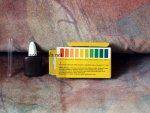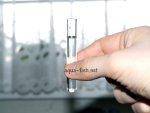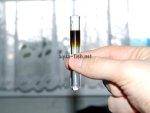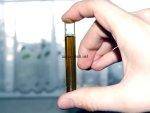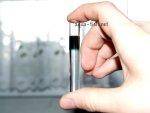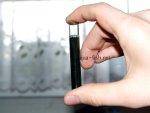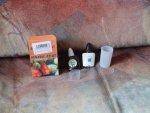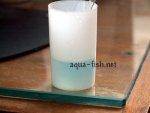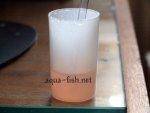Adjusting and Measuring pH in Fish Tanks, Recommendations & Forum
Quick links - Answers
Brief Description
This article explains how o measure and adjust pH in a fish tank; However we also have other articles that are directly related to pH, you should visit them: Normal pH in the aquarium, Water chemistry with FAQ, Use of distilled water and water quality and Water hardness with forum. If you cannot find answer on your question, use a form available at the bottom of this page to ask. We will gladly answer!
Introduction
pH (the measure of the acidity or basicity of a solution) is one of the most important variables that must be measured in every fish tank on a regular basis, preferably once a week, in order to avoid unexpected losses of fish and even plants. Before we move forward and explain ways how to adjust pH in a fish tank, let’s list all basic rules:
- There’s no “ideal” pH value, however the value of 7 is considered suitable for almost all fish no matter where they come from. Even most African cichlids will tolerate pH of 7, however their natural environment should be mimicked as much as possible. pH can range from 0 to 14 in general, but pH in fish tanks is mostly between 6 and 8.
- Performing basic tests to find pH value is a “must do” task before purchasing new fish or plants – ask shop assistants about pH in tanks where your new fish or plants are located before you pay for them. Make sure pH in tanks at your local pet store is same or very similar to pH in your own fish tank. Speaking generally there’s a tolerance of 0.5 – this is considered safe.
- Carbonate hardness affects pH value. If carbonate hardness becomes too low (0-3), pH won’t be stable and predictable unless carbonate hardness is increased to 4 or above.
- The midpoint level of 7 pH value means that the water is neutral. In layman’s terms this means that if the pH levels in the tank water are reduced, the levels of acid in the water are increased. On the other hand, if the pH levels rise above 7, then the alkaline levels in the water will increase. It goes without saying that neither fluctuation is desirable and the more they rise or fall, then the more dangerous it is for the fish.
How to increase pH in a fish tank
The first and the easiest way how to increase pH in a fish tank is to place a few limestone rocks inside. These rocks slowly release calcium which not only increases pH, but it also makes water harder. Any rock that “bubbles” once vinegar is spilled on its surface contains enough calcium to increase pH and general water hardness significantly. Bear in mind that rocks shouldn’t have sharp edges and should be preferably flat as these are known to be “fish friendly”, otherwise sharp edges may injure fish.
The second easy way of increasing pH is addition of crushed sources of calcium into filtration chambers of your filter. Canister (external or HOB) filters are ideal for this purpose as they offer plenty of space for adding any extra items. Aquatic stores often offer corals which can be crushed and added into filtration chambers, they don’t take too much space and it doesn’t matter whether you reserve a dedicated chamber for it or whether you mix it with ceramic rings or activated carbon.
Third easy way how to increase pH is derived from the previous options – add limestone rocks and corals to a temporary tank which won’t house any fish, pH in such a tank can easily climb to 9. Such a tank doesn’t need any filtration however place a lid to the top to keep impurities and dust from entering it. Once you perform a water change use aged water from that tank. Bear in mind that pH in your temporary tank should be monitored before performing any water change. There’s another advantage of running a temporary tank – aquarists don’t need to worry about chlorine as it’ll disappear from temporary tank as time goes by. Another advantage of a temporary tank is ability to control pH in your primary tank by adding small amounts of “high pH water” to your main tank. As you add each 10 liters you can perform a test in your main tank in order to tell whether the change is sufficient or not.
Perhaps the fastest method to increase pH is to add sodium bicarbonate into your aquarium. Not only it increases pH, it also increases carbonate hardness so you kill two birds with one stone. However you cannot add unlimited amount of sodium bicarbonate into your fish tank because it must dissolve first, recommended amount is 1 teaspoon per 50 liters (13 US gallons, 11 Imperial gallons). The steps are as follows:
- Measure pH and carbonate hardness in your aquarium, in case these values aren’t satisfactory continue to the step 2
- Mix chlorine-free water with sodium bicarbonate in a glass (as mentioned above – 1 teaspoon per 50 liters – so if your tank capacity is 400 liters, then use 8 teaspoons)
- Slowly spill the water in your aquarium
- Perform another pH and carbonate hardness test in 10 minutes and continue to the step 2 in case results aren’t satisfactory
Alternative to the above-described methods is use of various commercial products, however they usually don’t increase KH (carbonate hardness), therefore such usage is more than questionable. pH will drop again in a day or two in most cases.
How to reduce pH in a fish tank
The first technique of reducing pH is to use peat in filtration chambers however used peat must be free of all chemicals. Therefore use special peat that can be purchased at aquatic stores, never use peat for garden plants, although it’s necessary to admit that nowadays many garden ones are 100% aquarium-safe. Peat has to be placed in a filtration chamber, however expecting it to reduce pH as fast as if we used sodium bicarbonate in the process of increasing pH values should be avoided. Addition to this natural way of reducing pH is use of driftwood. Driftwood will reduce pH in the long run, however it is impossible to tell how fast these two additions are going to reduce pH because fish tanks have different characteristics namely size, number of fish and plants, substrate, objects that affect pH and carbonate hardness.
If pH of tap water is significantly lower than pH in your aquarium, say pH of tap water is 7 while pH in your tank exceeds 7.8, then using aged chlorine-free tap water is just fine for the purpose of pH reduction. Chlorine usually disappears in 24 hours after you fill a bucket with tap water, therefore it’s a simple method to think of.
If you feel that the pH is too high you may have to resort to using a Reverse osmosis unit to remove some of the mineral, this is the safest way of making your water more acidic. Reverse osmosis units are not cheapest though.
Commercial products belong to alternatives that should be tested at last.
Exceptions
As in most cases there are exceptions to the rule in aquarium pH control. For example fish that come from South American origin appear to thrive better in softer water with a high level of acidity, and will do fine in water with pH levels of six. On the other hand East African fish like a hard, high alkaline level of water and do well at eight or more. The trick is of course is to find a cross section of fish that will do well at the ideal pH level of seven, and build on that.
Some example of fish species that require different pH levels are as follows:
Discus, Angelfish, Rams and Apistogrammas all require soft acidic water, the pH needs to be below 7.0 so if you cannot match this level it may be worth considering keeping different species of fish. Some of the tank bred specimens may tolerate a higher pH level but if you are keeping wild specimens a higher pH level could be detrimental to their health.
Guppies and Swordtails prefer alkaline water so the pH needs to be above 7.0, this is when you may need to buffer your water to keep the pH to a high enough level. Always remember that when the tank is first set up the pH will be at its highest, after a few weeks the pH may drop slightly so keep testing the water to check for this.
It should be taken into account that over time the levels of acidity in pH will rise gradually. This should not necessarily cause too many problems, as the process is very gradual. In most cases, the on-the-ball aquarist will level out the problem by changing the water in the tank proportionally as part of their regular maintenance program.
Controlling certain aspects of “water behavior” in your fish tank needs to be carried out, and not just the levels of pH. Other aspects that need to be constantly monitored are the hardness or softness of the water levels or other chemicals that have may have been added to the water that might be dangerous to the fish. Unfortunately no single kit can handle all these important procedures, so it is necessary for the owner or operator of the aquarium to have a separate kit on hand for each procedure that need to be carried, and all on a regular basis, including aquarium pH adjustments.
Carbonate Hardness
Water in itself possesses an ability to resist changes in its pH level through the interference of outside sources. This is known as a buffering system. Aquarists who are interested in determining the level of capacity of their buffering systems can do so by measuring the carbonate hardness levels of the water, which is measured in dKH (we also know dGH which is overall hardness, but it's different than carbonate hardness).
Once the aquarium owner or operator has ascertained the water hardness levels that are drawn, they will be pleased to discover that they rarely vary. Usually sufficient to keep the average aquarium tank water’s buffering system in balance is a degree of hardness (dKH) scale of between four to six. As stated above, carbonate hardness of three is not good and will mean that the buffering system is unstable and may cause pH levels to drop.
Short summary
There is no such thing as an ideal pH for the aquarium, there is such a thing as an ideal pH for the species of fish that you are keeping in the aquarium. All fish species vary in their requirements, they all originate from different waterways around the world so the water will have different parameters, this means that pH levels for tropical fish vary.
A guide on testing pH in your aquarium
Firstly buy some pH test kit as it’s shown below (same applies to testing ammonia, nitrates, nitrites).
Then follow all instructions given by manufacturer.
As we can see, pH of this water is very low (about 5.8 only!!!). This requires a water change in general. Let’s do another test (please note that the result was green instead of black; the green colour can be seen at the top of the test-tube.
Now the pH level is about 7.1-7.2 which is optimal nearly for all aquarium fish species. Naturally, we should test water hardness too. See the pictures below to see how easy it is.
Another useful article on the web
- pH and Ammonia at nippyfish.net!
Additional questions and answers
On March 22th 2011 we added the following questions here due to merging aqua-fish.net/answers with articles in order to put all related information together. You're welcome to ask own questions as long as they're unique and not yet answered on this page. Use a form that can be found at the bottom for this purpose, please.
-
What ph should be in an aquarium?
Answer: 7. This value applies to most aquariums. There may be exceptions such as African Cichlids aquarium (high pH required; 8 ) or some South American creeks biotopes which require low pH (6).
-
What causes pH to drop?
Answer: usually low dGH. If dGH is at least 4, pH is more stable than when dGH is below 4. Low pH is also caused by missing minerals in the water (in general).
-
What happens to aquarium fish when the pH is too high or too low?
Answer: If the pH is too low for the species of fish you are keeping gill burning and scale darkening will take place. The fish will become stressed and health problems will occur. High pH will also stress fish species that are used to acidic water conditions, this will too lower the immune system on the fish and they will suffer.





